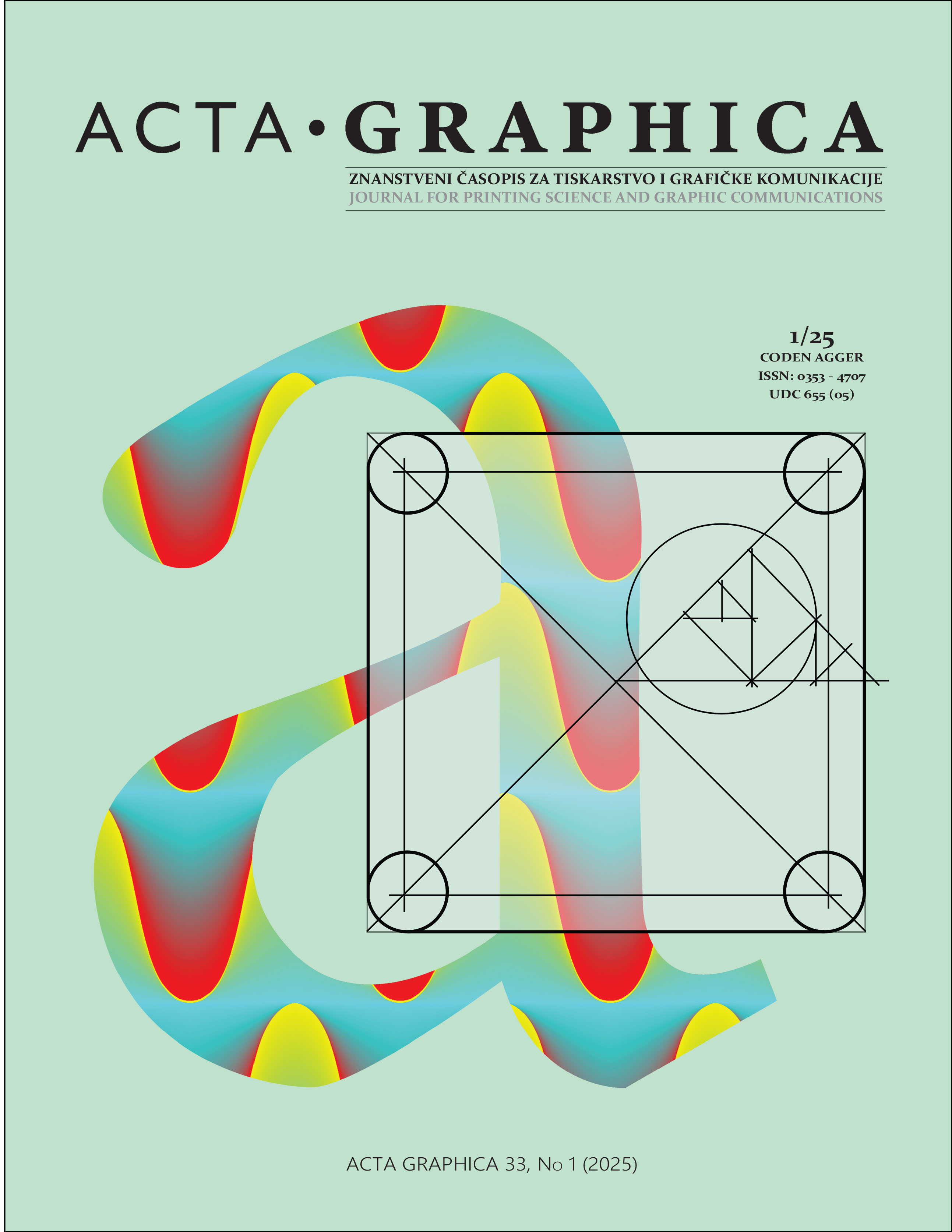Evaluation of scumming printing defect by using computer vision-based bit plane slicingmethod
Keywords:
Scumming Print Defect, Bit-Plane Slicing, DCT, Image Processing, Computer VisionAbstract
In offset lithography scumming print defect occurs when non-image areas of the image carrier accept ink and transfer it to the blanket. The quality of printed image is compromised with the presence of scumming pixels. Visual impact in terms of readability affected due to this unwanted print defect. Moreover, archival process through scanning and OCR can be interfered by the presence of scumming. Various press conditions are responsible for this phenomenon. Generally, this kind of printing problem is detected manually and preventive measure is taken according to the factor responsible for the occurrence of this defect. There is no such standard procedure except eye assessment to detect the scumming print defect. Therefore, the presented method is a novel approach in printing field with automated defect detection system minimizing the human errors. In the present study a computer vision-based approach has been proposed to evaluate this kind of print defects and its percentage of occurrence over the existing manual detection procedure. As the density difference of scum pixels and print pixels are not that much differentiable, it becomes a challenging task to identify the scum pixels from print pixels in the present computer vision-based study. Intensity of pixels can also be varied in different kind of images which makes the segregation of scum pixels even
more difficult. In this study the detection of this print defect achieved using an automated bit plane selection approach to choose the bit plane which carries the maximum information than other bit planes. Discrete cosine transform is applied to that selected bit plane to discard the unwanted
frequency, retaining the required ones. To segment the scum pixels from the print pixels, an adaptive thresholding method with a proposed range of intensity values have been applied to high key, low key and mid key images. The result shows the effectiveness of the proposed algorithm as compared
to present subjective method.
Downloads
Published
Versions
- 2025-08-22 (2)
- 2025-06-27 (1)





